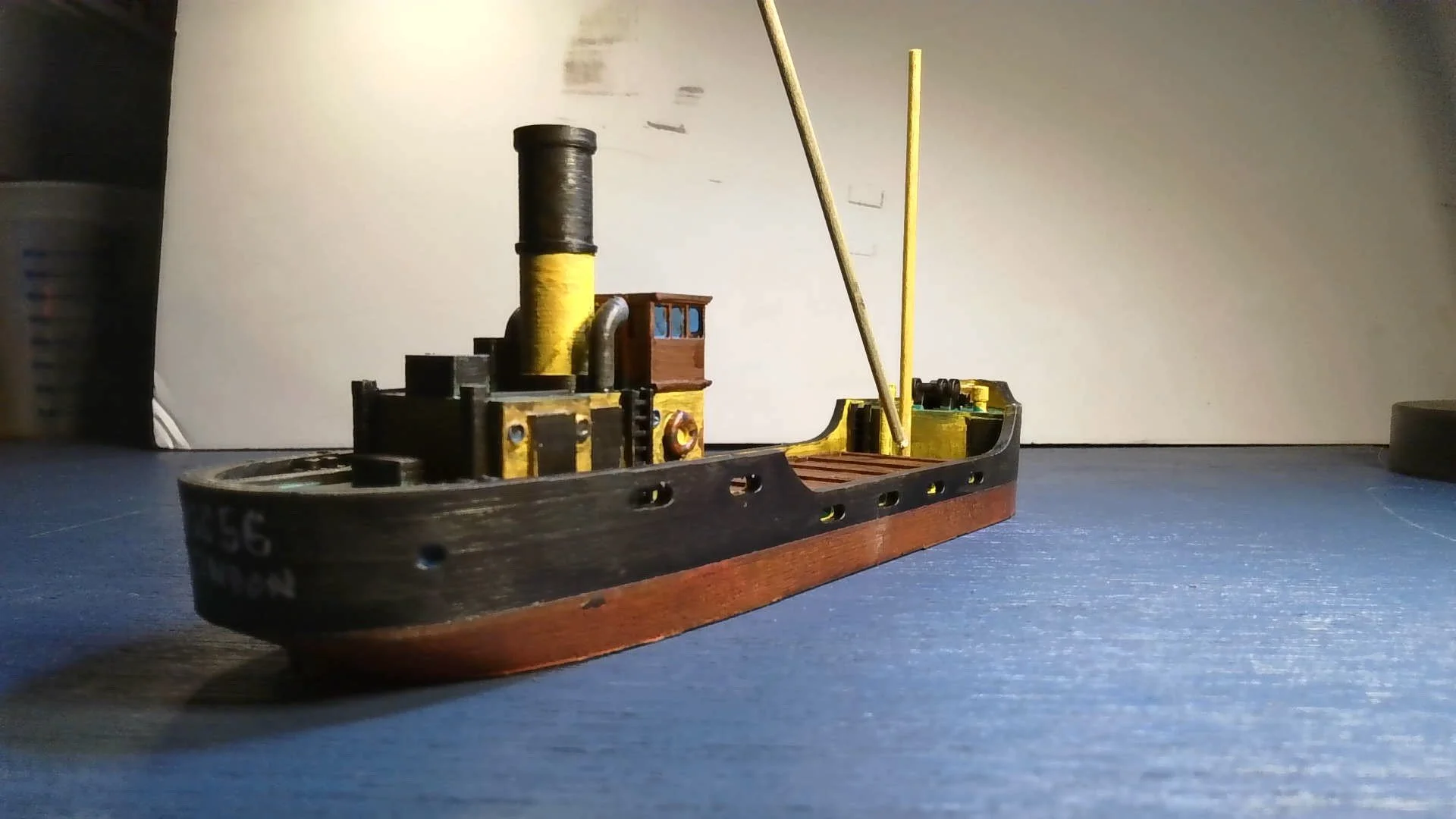Steam Coasting Lighter - Small Freighter - Tanker after Victualing Inshore Craft (VIC)
Steam Coasting Lighter - Small Freighter - Tanker after Victualing Inshore Craft (VIC)
Victualing Inshore Craft, also known as a "VIC" or Steam Coasting Lighter or "Puffer." A total of 98 were built during WW2 to supply naval ships. The English Admiralty based this design off the classic coaster Clyde puffers, so named because early versions used steam engines that puffed steam due to a simple design, the Admiralty made some changes from the classic puffer, but the design was so similar many VIC's retired from military service to the puffer trade routes.
VICs were used almost anywhere naval supply services were needed. Some were shipped (as deck cargo similar to how MBT's were shipped) to overseas bases such as Malta and even to the far east (retrofitted with diesels motors) as small tankers.
The VICs were employed at Royal Navy harbors and anchorages around the coast of Britain, lightering all manner of supplies as needed. Their largely unsung work was nonetheless vital to the smooth running of naval operations.
After the war ended many VICs were sold into merchant service. Today just a few survive including VIC56 - a photo of which inspired Brian to make this sculpt.
This model is available in several scales and finishes
The 3MM 1/600 scale version is approx. 42MM long and printed in hi-res SLA
The 6mm 1/300 scale version measures 85x20mm and is available in two finish levels: FDM (standard finish) or SLA (hi-res finish)
The 15mm 1/100 scale version (well suited for 15-20MM games) measures 250mmx60mm and is printed in FDM (New for 2023!)
This model features 3D printed parts: There are two types of 3D printed parts we use in our products. "FDM" is lower cost, and is what most would recognize as traditional 3D printing. This type of model printed in layers from thermal plastic (generally PLA or PETG), and is lightweight with reasonable detail but will have visible striation (or lines) that the hobbyist may want to clean up using putty, primer, or other hobby techniques. "SLA" is a laser cured photo-resin that has exceptional detail, and generally has a much smoother finish without significantly noticeable striation. This type of material is more expensive, and fine details can be more delicate.
Some models may use either or both types of parts, and some models may have the ability for the buyer to select the print type under print options. These models are intended to be painted and may come in different colors.



































